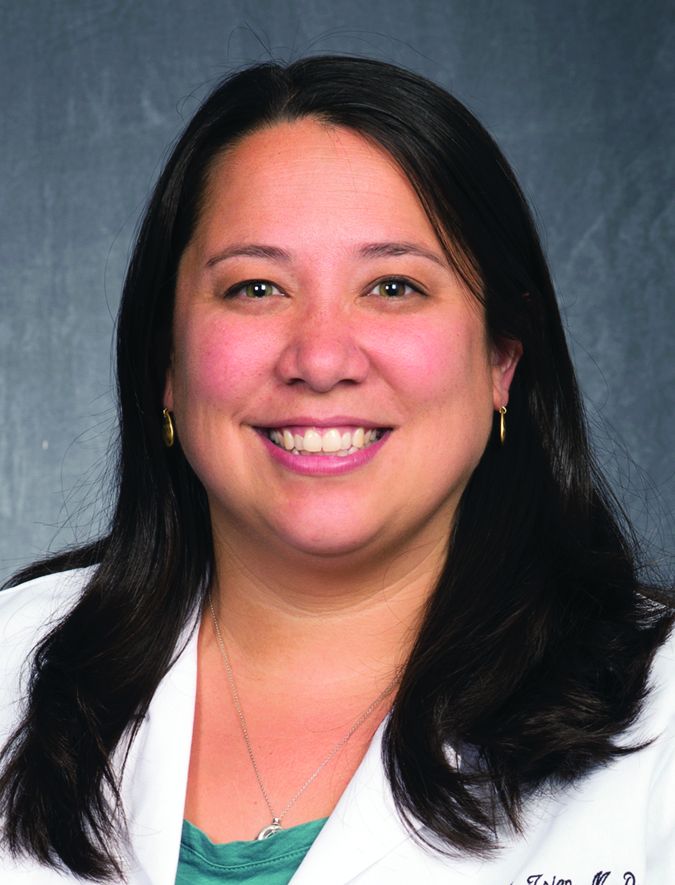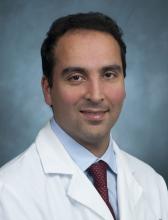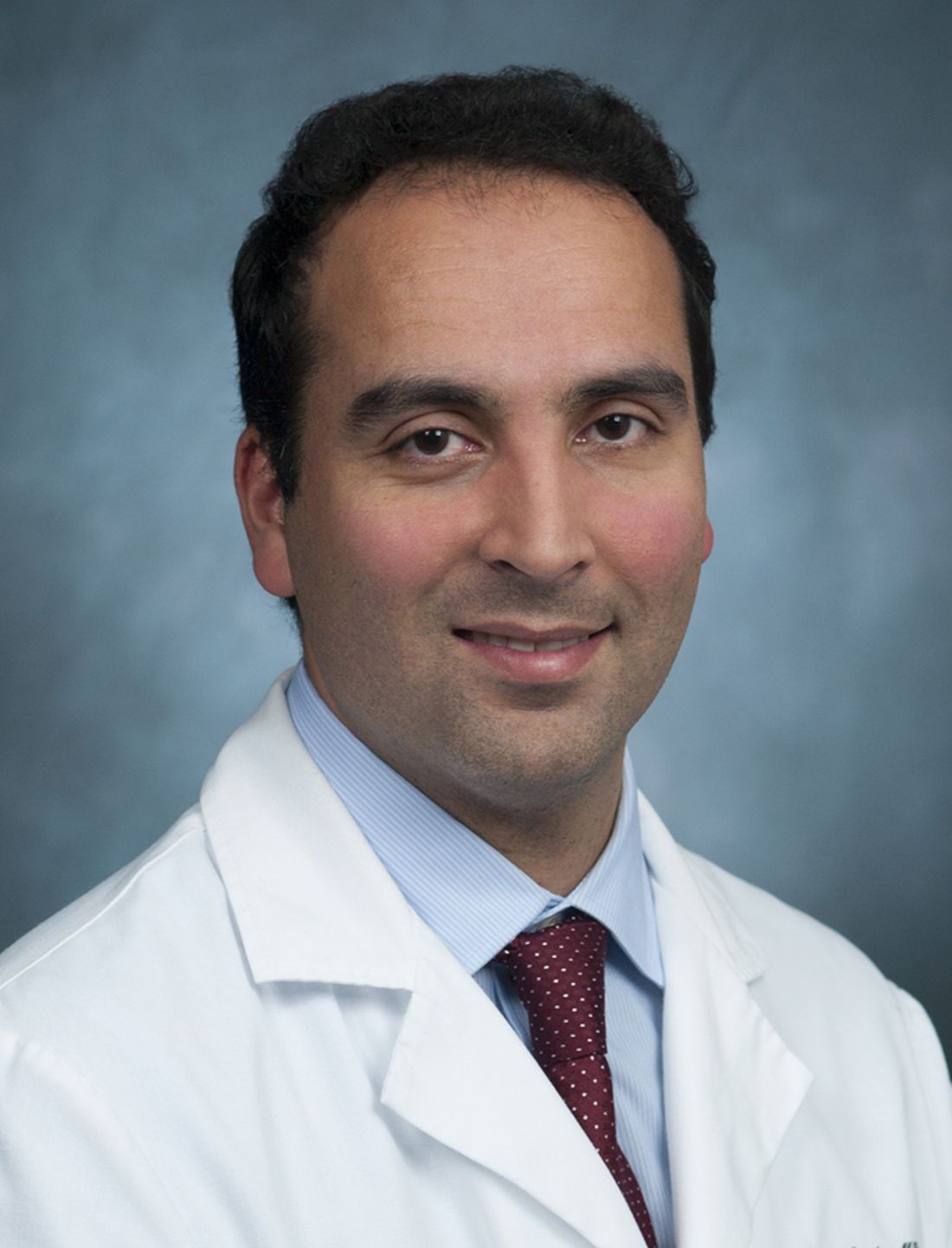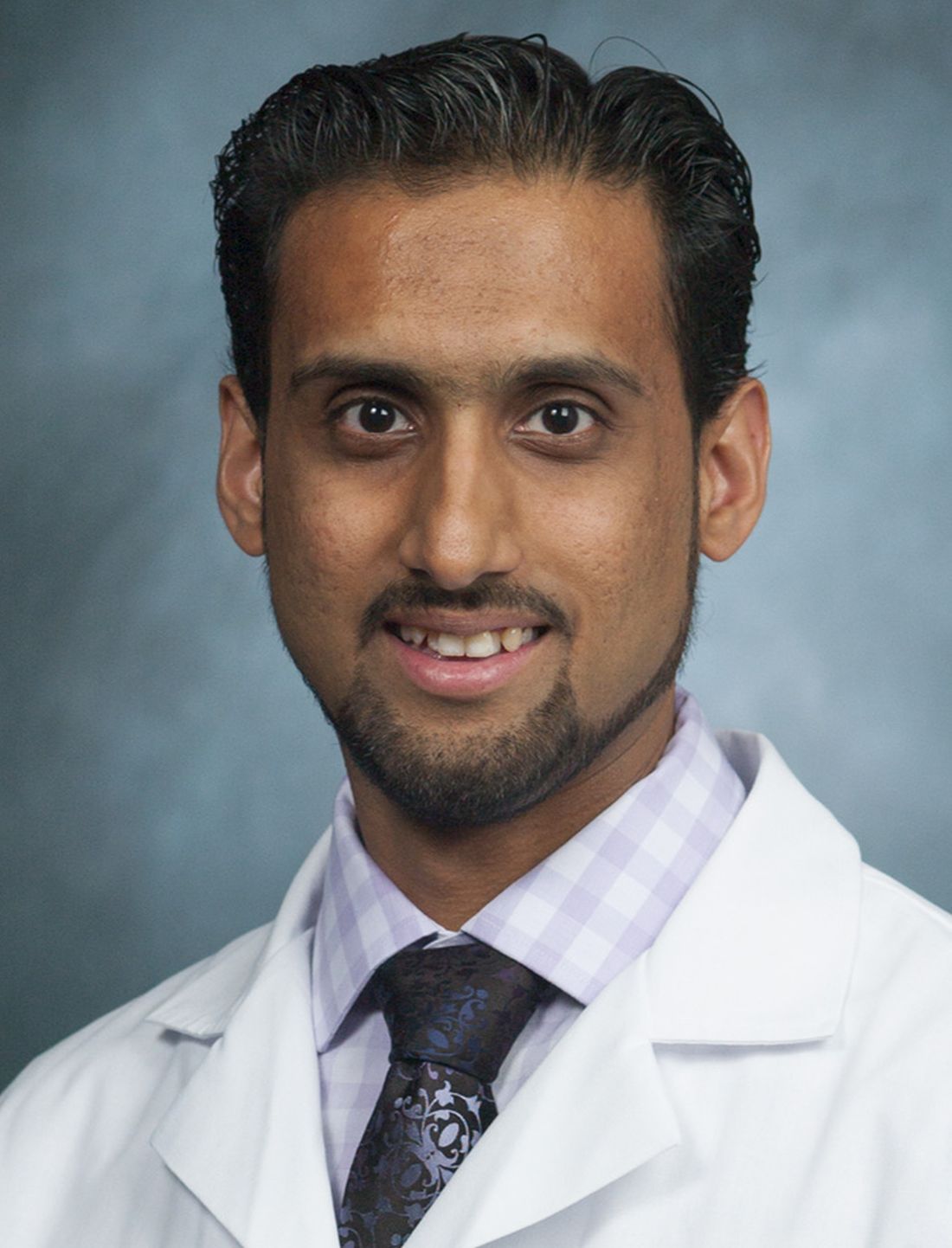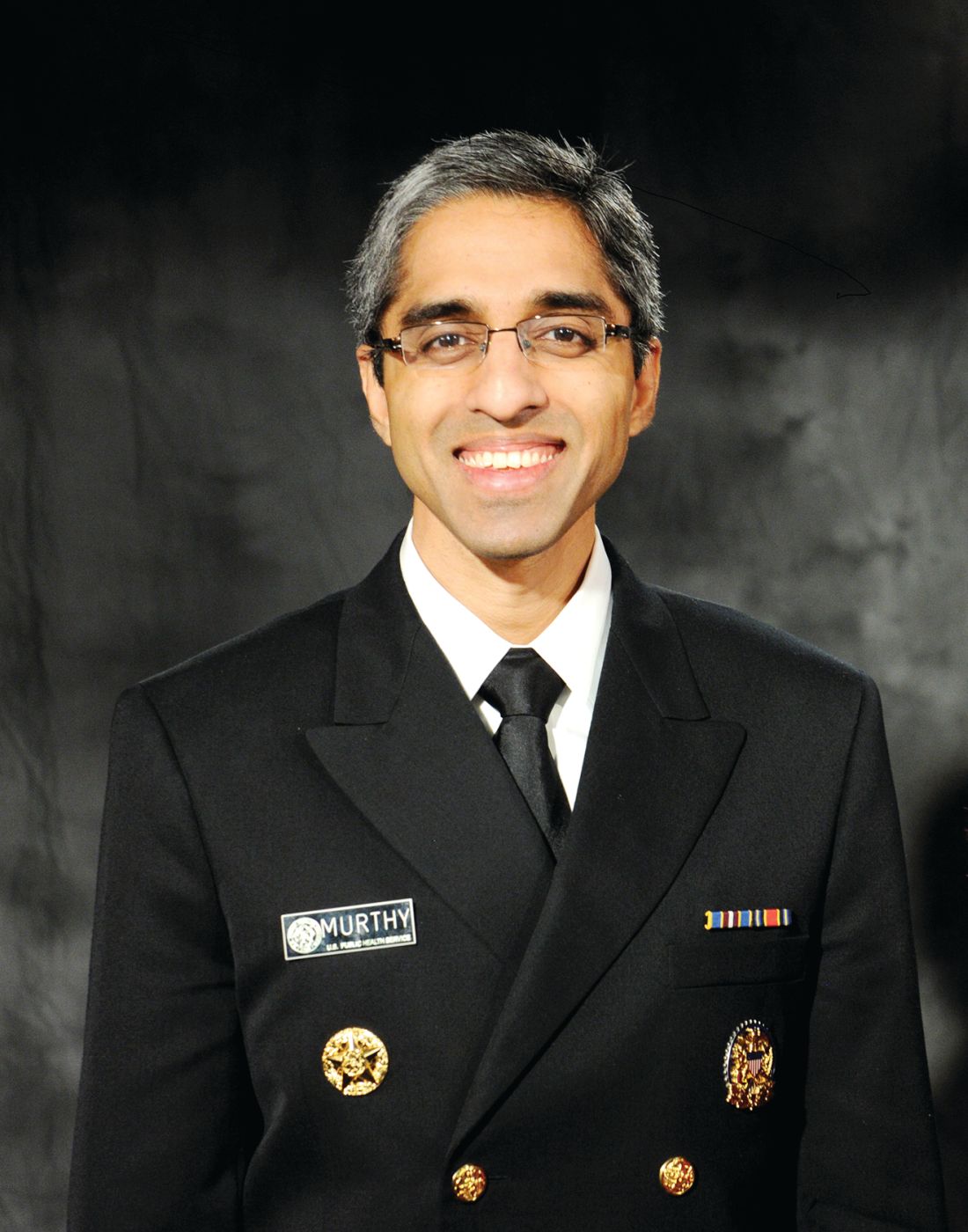User login
Torsemide vs. furosemide in heart failure patients
Background: Treatment goals of heart failure include improvement in quality of life, prevention of hospitalization, and decreases in mortality. Loop diuretics can improve these goals. Furosemide (Lasix) is the most widely used diuretic in heart failure patients. Torsemide (Demadex) has a better pharmacokinetic and pharmacodynamic profile than does furosemide, with greater bioavailability, a longer half-life, and higher potency. In addition, there is a suggestion that torsemide has a vasodilatory effect and a possible antialdosterone effect that may contribute to its efficacy. However, it is not known if that better profile leads to differences or improvements in primary treatment goals.
Study design: Systematic review and meta-analysis.
Setting: 19 published randomized, controlled trials (RCTs) or observational studies in the English language.
Synopsis: 19 RCTs and observational studies comparing furosemide and torsemide were analyzed to identify differences in New York Heart Association functional classification, side effects, hospitalizations for heart failure, cardiac mortality, and all-cause mortality. More than 19,000 patients were included with a mean follow-up of 15 months. Torsemide was associated with a significant improvement in functional status with a number needed to treat of five. In addition, there were lower numbers of hospitalizations from heart failure and a lower risk of cardiac death in the torsemide arm though these differences disappeared when RCTs were analyzed alone. There were no differences in all-cause mortality or medication side effects between furosemide and torsemide.
Bottom line: The use of torsemide is associated with significant improvement in functional status. It is also – though less significantly – associated with lower hospitalization rates for heart failure and lower cardiac mortality.
Citation: Abraham B et al. Meta-analysis comparing torsemide versus furosemide in patients with heart failure. Am J Cardiol. 2020 Jan 1;125: 92-9.
Dr. Tsien is assistant professor in the division of hospital medicine, Loyola University Medical Center, Maywood, Ill.
Background: Treatment goals of heart failure include improvement in quality of life, prevention of hospitalization, and decreases in mortality. Loop diuretics can improve these goals. Furosemide (Lasix) is the most widely used diuretic in heart failure patients. Torsemide (Demadex) has a better pharmacokinetic and pharmacodynamic profile than does furosemide, with greater bioavailability, a longer half-life, and higher potency. In addition, there is a suggestion that torsemide has a vasodilatory effect and a possible antialdosterone effect that may contribute to its efficacy. However, it is not known if that better profile leads to differences or improvements in primary treatment goals.
Study design: Systematic review and meta-analysis.
Setting: 19 published randomized, controlled trials (RCTs) or observational studies in the English language.
Synopsis: 19 RCTs and observational studies comparing furosemide and torsemide were analyzed to identify differences in New York Heart Association functional classification, side effects, hospitalizations for heart failure, cardiac mortality, and all-cause mortality. More than 19,000 patients were included with a mean follow-up of 15 months. Torsemide was associated with a significant improvement in functional status with a number needed to treat of five. In addition, there were lower numbers of hospitalizations from heart failure and a lower risk of cardiac death in the torsemide arm though these differences disappeared when RCTs were analyzed alone. There were no differences in all-cause mortality or medication side effects between furosemide and torsemide.
Bottom line: The use of torsemide is associated with significant improvement in functional status. It is also – though less significantly – associated with lower hospitalization rates for heart failure and lower cardiac mortality.
Citation: Abraham B et al. Meta-analysis comparing torsemide versus furosemide in patients with heart failure. Am J Cardiol. 2020 Jan 1;125: 92-9.
Dr. Tsien is assistant professor in the division of hospital medicine, Loyola University Medical Center, Maywood, Ill.
Background: Treatment goals of heart failure include improvement in quality of life, prevention of hospitalization, and decreases in mortality. Loop diuretics can improve these goals. Furosemide (Lasix) is the most widely used diuretic in heart failure patients. Torsemide (Demadex) has a better pharmacokinetic and pharmacodynamic profile than does furosemide, with greater bioavailability, a longer half-life, and higher potency. In addition, there is a suggestion that torsemide has a vasodilatory effect and a possible antialdosterone effect that may contribute to its efficacy. However, it is not known if that better profile leads to differences or improvements in primary treatment goals.
Study design: Systematic review and meta-analysis.
Setting: 19 published randomized, controlled trials (RCTs) or observational studies in the English language.
Synopsis: 19 RCTs and observational studies comparing furosemide and torsemide were analyzed to identify differences in New York Heart Association functional classification, side effects, hospitalizations for heart failure, cardiac mortality, and all-cause mortality. More than 19,000 patients were included with a mean follow-up of 15 months. Torsemide was associated with a significant improvement in functional status with a number needed to treat of five. In addition, there were lower numbers of hospitalizations from heart failure and a lower risk of cardiac death in the torsemide arm though these differences disappeared when RCTs were analyzed alone. There were no differences in all-cause mortality or medication side effects between furosemide and torsemide.
Bottom line: The use of torsemide is associated with significant improvement in functional status. It is also – though less significantly – associated with lower hospitalization rates for heart failure and lower cardiac mortality.
Citation: Abraham B et al. Meta-analysis comparing torsemide versus furosemide in patients with heart failure. Am J Cardiol. 2020 Jan 1;125: 92-9.
Dr. Tsien is assistant professor in the division of hospital medicine, Loyola University Medical Center, Maywood, Ill.
Ruling out PE in patients with low C-PTP and D dimer of less than 1,000 ng/mL
Background: A pulmonary embolism can be considered ruled out if patients have a low C-PTP for PE and a D-dimer level of less than 500 ng/mL. However, this occurs in approximately 30% of outpatients only. By increasing the D-dimer threshold used to define a negative test to 1,000 ng/mL in patients with a low C-PTP, we might be able to rule out a larger segment of patients and avoid chest imaging.
Study design: Prospective study.
Setting: University-based clinical centers in Canada.
Synopsis: This study enrolled 2,017 patients presenting with symptoms of PE. The Wells’ criteria was used to categorize the patient’s C-PTP as low (0-4.0), moderate (4.5-6.0), or high (6.5 or more). Patients with a low or moderate C-PTP had a D dimer drawn. Those with a low C-PTP and D dimer of less than 1,000 ng/mL or moderate C-PTP and a D dimer of less than 500 ng/mL underwent no further testing. Outcomes were assessed at 90 days. Of the 1,325 patients with a low C-PTP or moderate C-PTP and a negative D-dimer test (less than 1,000 or 500 ng/mL, respectively), none had venous thromboembolism during follow-up (95% confidence interval, 0.00-0.29). This strategy resulted in the use of chest imaging in only 34.3% of patients versus 51.9% using the prior criteria of a D-dimer level of less than 500 ng/mL (difference, –17.6 percentage points; 95% CI, −19.2 to −15.9). One limitation of the study is that almost all patients enrolled were outpatients (only one inpatient).
Bottom line: A combination of a low C-PTP and a D-dimer level of less than 1,000 ng/mL identified a group of patients at low risk for pulmonary embolism during follow-up.
Citation: Kearon C et al. Diagnosis of pulmonary embolism with D-dimer adjusted to clinical probability. N Engl J Med 2019 Nov 28;381:2125-34.
Dr. Santa is assistant professor in the division of hospital medicine, Loyola University Medical Center, Maywood, Ill.
Background: A pulmonary embolism can be considered ruled out if patients have a low C-PTP for PE and a D-dimer level of less than 500 ng/mL. However, this occurs in approximately 30% of outpatients only. By increasing the D-dimer threshold used to define a negative test to 1,000 ng/mL in patients with a low C-PTP, we might be able to rule out a larger segment of patients and avoid chest imaging.
Study design: Prospective study.
Setting: University-based clinical centers in Canada.
Synopsis: This study enrolled 2,017 patients presenting with symptoms of PE. The Wells’ criteria was used to categorize the patient’s C-PTP as low (0-4.0), moderate (4.5-6.0), or high (6.5 or more). Patients with a low or moderate C-PTP had a D dimer drawn. Those with a low C-PTP and D dimer of less than 1,000 ng/mL or moderate C-PTP and a D dimer of less than 500 ng/mL underwent no further testing. Outcomes were assessed at 90 days. Of the 1,325 patients with a low C-PTP or moderate C-PTP and a negative D-dimer test (less than 1,000 or 500 ng/mL, respectively), none had venous thromboembolism during follow-up (95% confidence interval, 0.00-0.29). This strategy resulted in the use of chest imaging in only 34.3% of patients versus 51.9% using the prior criteria of a D-dimer level of less than 500 ng/mL (difference, –17.6 percentage points; 95% CI, −19.2 to −15.9). One limitation of the study is that almost all patients enrolled were outpatients (only one inpatient).
Bottom line: A combination of a low C-PTP and a D-dimer level of less than 1,000 ng/mL identified a group of patients at low risk for pulmonary embolism during follow-up.
Citation: Kearon C et al. Diagnosis of pulmonary embolism with D-dimer adjusted to clinical probability. N Engl J Med 2019 Nov 28;381:2125-34.
Dr. Santa is assistant professor in the division of hospital medicine, Loyola University Medical Center, Maywood, Ill.
Background: A pulmonary embolism can be considered ruled out if patients have a low C-PTP for PE and a D-dimer level of less than 500 ng/mL. However, this occurs in approximately 30% of outpatients only. By increasing the D-dimer threshold used to define a negative test to 1,000 ng/mL in patients with a low C-PTP, we might be able to rule out a larger segment of patients and avoid chest imaging.
Study design: Prospective study.
Setting: University-based clinical centers in Canada.
Synopsis: This study enrolled 2,017 patients presenting with symptoms of PE. The Wells’ criteria was used to categorize the patient’s C-PTP as low (0-4.0), moderate (4.5-6.0), or high (6.5 or more). Patients with a low or moderate C-PTP had a D dimer drawn. Those with a low C-PTP and D dimer of less than 1,000 ng/mL or moderate C-PTP and a D dimer of less than 500 ng/mL underwent no further testing. Outcomes were assessed at 90 days. Of the 1,325 patients with a low C-PTP or moderate C-PTP and a negative D-dimer test (less than 1,000 or 500 ng/mL, respectively), none had venous thromboembolism during follow-up (95% confidence interval, 0.00-0.29). This strategy resulted in the use of chest imaging in only 34.3% of patients versus 51.9% using the prior criteria of a D-dimer level of less than 500 ng/mL (difference, –17.6 percentage points; 95% CI, −19.2 to −15.9). One limitation of the study is that almost all patients enrolled were outpatients (only one inpatient).
Bottom line: A combination of a low C-PTP and a D-dimer level of less than 1,000 ng/mL identified a group of patients at low risk for pulmonary embolism during follow-up.
Citation: Kearon C et al. Diagnosis of pulmonary embolism with D-dimer adjusted to clinical probability. N Engl J Med 2019 Nov 28;381:2125-34.
Dr. Santa is assistant professor in the division of hospital medicine, Loyola University Medical Center, Maywood, Ill.
FMT cuts risk of bloodstream infections in patients with recurrent CDI
Background: After a first episode of CDI, almost 20% of patients will have a recurrence. Recurrent CDI (rCDI) is more likely to be associated with life-threatening complications including toxic megacolon, perforation, bloodstream infections, and death. Most BSIs are caused by intestinal microbes. Some evidence suggests that vancomycin therapy creates conditions that favor intestinal colonization by health care–associated pathogens. FMT aims to restore the normal composition of gut microbiota, is superior to vancomycin, and might decrease the incidence of BSI and related complications including death.
Study design: Prospective cohort study.
Setting: Fondazione Policlinico Universitario Agostino Gemelli in Rome.
Synopsis: In this study, 290 patients with rCDIs were randomized to FMT (109 patients) or antibiotic therapy (181 patients). Only patients with their first rCDIs were included. The primary outcome was the development of primary BSI after treatment of rCDI and within a 90-day follow-up period. Secondary outcomes were length of hospitalization and overall survival at 90 days.
Five patients in the FMT group and 40 in the antibiotic group (16% of total patients) developed BSIs during the 90-day follow-up. Because of baseline characteristic differences in the patients treated with FMT versus antibiotics, comparative analyses were limited to the matched cohort. Risk for BSIs was 23% lower in the FMT group (95% confidence interval, 10%-35%); the FMT group also had 14 fewer days of hospitalization (95% CI, 9-20 fewer days) and a 32% increase in overall survival (95% CI, 16%-47%), compared with the antibiotic group. Limitations of the study include its observational nature, single-center design, and differences in several baseline characteristics between the groups remaining after the match.
Bottom line: Patients with rCDI who received FMT were less likely to develop primary BSIs and related complications, including hospital length of stay and death when compared with patients who received antibiotics.
Citation: Ianiro G et al. Incidence of bloodstream infections, length of hospital stay, and survival in patients with recurrent Clostridioides difficile infection treated with fecal microbiota transplantation or antibiotics: A prospective cohort study. Ann Intern Med. 2019, Nov 5;171:695-702.
Dr. Santa is assistant professor in the division of hospital medicine, Loyola University Medical Center, Maywood, Ill.
Background: After a first episode of CDI, almost 20% of patients will have a recurrence. Recurrent CDI (rCDI) is more likely to be associated with life-threatening complications including toxic megacolon, perforation, bloodstream infections, and death. Most BSIs are caused by intestinal microbes. Some evidence suggests that vancomycin therapy creates conditions that favor intestinal colonization by health care–associated pathogens. FMT aims to restore the normal composition of gut microbiota, is superior to vancomycin, and might decrease the incidence of BSI and related complications including death.
Study design: Prospective cohort study.
Setting: Fondazione Policlinico Universitario Agostino Gemelli in Rome.
Synopsis: In this study, 290 patients with rCDIs were randomized to FMT (109 patients) or antibiotic therapy (181 patients). Only patients with their first rCDIs were included. The primary outcome was the development of primary BSI after treatment of rCDI and within a 90-day follow-up period. Secondary outcomes were length of hospitalization and overall survival at 90 days.
Five patients in the FMT group and 40 in the antibiotic group (16% of total patients) developed BSIs during the 90-day follow-up. Because of baseline characteristic differences in the patients treated with FMT versus antibiotics, comparative analyses were limited to the matched cohort. Risk for BSIs was 23% lower in the FMT group (95% confidence interval, 10%-35%); the FMT group also had 14 fewer days of hospitalization (95% CI, 9-20 fewer days) and a 32% increase in overall survival (95% CI, 16%-47%), compared with the antibiotic group. Limitations of the study include its observational nature, single-center design, and differences in several baseline characteristics between the groups remaining after the match.
Bottom line: Patients with rCDI who received FMT were less likely to develop primary BSIs and related complications, including hospital length of stay and death when compared with patients who received antibiotics.
Citation: Ianiro G et al. Incidence of bloodstream infections, length of hospital stay, and survival in patients with recurrent Clostridioides difficile infection treated with fecal microbiota transplantation or antibiotics: A prospective cohort study. Ann Intern Med. 2019, Nov 5;171:695-702.
Dr. Santa is assistant professor in the division of hospital medicine, Loyola University Medical Center, Maywood, Ill.
Background: After a first episode of CDI, almost 20% of patients will have a recurrence. Recurrent CDI (rCDI) is more likely to be associated with life-threatening complications including toxic megacolon, perforation, bloodstream infections, and death. Most BSIs are caused by intestinal microbes. Some evidence suggests that vancomycin therapy creates conditions that favor intestinal colonization by health care–associated pathogens. FMT aims to restore the normal composition of gut microbiota, is superior to vancomycin, and might decrease the incidence of BSI and related complications including death.
Study design: Prospective cohort study.
Setting: Fondazione Policlinico Universitario Agostino Gemelli in Rome.
Synopsis: In this study, 290 patients with rCDIs were randomized to FMT (109 patients) or antibiotic therapy (181 patients). Only patients with their first rCDIs were included. The primary outcome was the development of primary BSI after treatment of rCDI and within a 90-day follow-up period. Secondary outcomes were length of hospitalization and overall survival at 90 days.
Five patients in the FMT group and 40 in the antibiotic group (16% of total patients) developed BSIs during the 90-day follow-up. Because of baseline characteristic differences in the patients treated with FMT versus antibiotics, comparative analyses were limited to the matched cohort. Risk for BSIs was 23% lower in the FMT group (95% confidence interval, 10%-35%); the FMT group also had 14 fewer days of hospitalization (95% CI, 9-20 fewer days) and a 32% increase in overall survival (95% CI, 16%-47%), compared with the antibiotic group. Limitations of the study include its observational nature, single-center design, and differences in several baseline characteristics between the groups remaining after the match.
Bottom line: Patients with rCDI who received FMT were less likely to develop primary BSIs and related complications, including hospital length of stay and death when compared with patients who received antibiotics.
Citation: Ianiro G et al. Incidence of bloodstream infections, length of hospital stay, and survival in patients with recurrent Clostridioides difficile infection treated with fecal microbiota transplantation or antibiotics: A prospective cohort study. Ann Intern Med. 2019, Nov 5;171:695-702.
Dr. Santa is assistant professor in the division of hospital medicine, Loyola University Medical Center, Maywood, Ill.
IV drug users: The new face of candidemia
Background: Intravenous drug use is an increasingly common risk factor for candidemia as the opioid crisis worsens. This study quantifies this change and characterizes the changing epidemiology of candidemia.
Study design: A cross-sectional study.
Setting: Health departments in nine states.
Synopsis: IV drug users typically have a very distinctive phenotype among all patients with candidemia: They are younger (35 vs. 63 years), are more likely to be homeless, are not black, are smokers; they have hepatitis C, have no malignancies, have polymicrobial bacteremia, and have acquired the infection outside of the hospital. They are much less likely to die of the infection (8.6% vs 27.5%), compared with the non-IV drug users. In four states, the proportion of candidemia associated with IV drug use more than doubled, from 7% to 15% during 2014-2017, representing a possible shift in the epidemiology of candidemia.
The study did not quantify or address complications that many hospitalists see, such as endocarditis, endophthalmitis, and osteomyelitis. The study looked at only nine states, so results may not be generalizable. Nevertheless, the robust analysis suggests an alarming, increasing trend.
Bottom line: As the opioid crisis worsens, hospitalists should consider candidemia in hospitalized IV drug users and should evaluate patients with candidemia for IV drug use.
Citation: Zhang AY et al. The changing epidemiology of candidemia in the United States: Injection drug use as an increasingly common risk factor – Active surveillance in selected sites, United States, 2014-2017. Clin Infect Dis. 2019 Nov 2. doi: 10.1093/cid/ciz1061.
Dr. Raghavan is assistant professor in the division of hospital medicine, Loyola University Medical Center, Maywood, Ill.
Background: Intravenous drug use is an increasingly common risk factor for candidemia as the opioid crisis worsens. This study quantifies this change and characterizes the changing epidemiology of candidemia.
Study design: A cross-sectional study.
Setting: Health departments in nine states.
Synopsis: IV drug users typically have a very distinctive phenotype among all patients with candidemia: They are younger (35 vs. 63 years), are more likely to be homeless, are not black, are smokers; they have hepatitis C, have no malignancies, have polymicrobial bacteremia, and have acquired the infection outside of the hospital. They are much less likely to die of the infection (8.6% vs 27.5%), compared with the non-IV drug users. In four states, the proportion of candidemia associated with IV drug use more than doubled, from 7% to 15% during 2014-2017, representing a possible shift in the epidemiology of candidemia.
The study did not quantify or address complications that many hospitalists see, such as endocarditis, endophthalmitis, and osteomyelitis. The study looked at only nine states, so results may not be generalizable. Nevertheless, the robust analysis suggests an alarming, increasing trend.
Bottom line: As the opioid crisis worsens, hospitalists should consider candidemia in hospitalized IV drug users and should evaluate patients with candidemia for IV drug use.
Citation: Zhang AY et al. The changing epidemiology of candidemia in the United States: Injection drug use as an increasingly common risk factor – Active surveillance in selected sites, United States, 2014-2017. Clin Infect Dis. 2019 Nov 2. doi: 10.1093/cid/ciz1061.
Dr. Raghavan is assistant professor in the division of hospital medicine, Loyola University Medical Center, Maywood, Ill.
Background: Intravenous drug use is an increasingly common risk factor for candidemia as the opioid crisis worsens. This study quantifies this change and characterizes the changing epidemiology of candidemia.
Study design: A cross-sectional study.
Setting: Health departments in nine states.
Synopsis: IV drug users typically have a very distinctive phenotype among all patients with candidemia: They are younger (35 vs. 63 years), are more likely to be homeless, are not black, are smokers; they have hepatitis C, have no malignancies, have polymicrobial bacteremia, and have acquired the infection outside of the hospital. They are much less likely to die of the infection (8.6% vs 27.5%), compared with the non-IV drug users. In four states, the proportion of candidemia associated with IV drug use more than doubled, from 7% to 15% during 2014-2017, representing a possible shift in the epidemiology of candidemia.
The study did not quantify or address complications that many hospitalists see, such as endocarditis, endophthalmitis, and osteomyelitis. The study looked at only nine states, so results may not be generalizable. Nevertheless, the robust analysis suggests an alarming, increasing trend.
Bottom line: As the opioid crisis worsens, hospitalists should consider candidemia in hospitalized IV drug users and should evaluate patients with candidemia for IV drug use.
Citation: Zhang AY et al. The changing epidemiology of candidemia in the United States: Injection drug use as an increasingly common risk factor – Active surveillance in selected sites, United States, 2014-2017. Clin Infect Dis. 2019 Nov 2. doi: 10.1093/cid/ciz1061.
Dr. Raghavan is assistant professor in the division of hospital medicine, Loyola University Medical Center, Maywood, Ill.
Thyroid hormone analogues can reverse NASH
Background: Fat toxicity results in inflammation of the liver and eventual hepatic fibrosis and cirrhosis. Thyroid hormones can greatly reduce this hepatic steatosis by restoring metabolic pathways in damaged liver, prevent fibrosis progression, and have broad atherogenic lipid-lowering actions by activating hepatic thyroid beta-receptors.
However, hyperthyroidism also leads to osteoporosis, tachyarrhythmias, muscle wasting, and psychiatric side effects, mediated by the alpha-thyroid receptor. Resmetirom (MGL-3196) is a novel, highly selective thyroid beta-agonist, with a minimal side-effect profile, which avoids the alpha–side effects.
Study design: Randomized, double-blind, placebo-controlled study.
Setting: 25 centers in the United States.
Synopsis: Of 125 adults with NASH fibrosis 1-3 and greater than 10% hepatic fat, 84 received resmetirom and 41 received placebo. Resmetirom resulted in a nearly 30% decrease over placebo in hepatic fat, compared with baseline, significant improvement in lipid profile, improvement in liver enzymes, fibrosis markers, and histologic resolution of NASH in some patients.
While the study showed resolution of inflammation, the 36-week study was likely not long enough to show improvement of fibrosis. The relatively small sample size also limited results. Placebo patients who lost significant weight also showed improvement and were discarded from analysis, suggesting that weight loss itself is also an excellent alternative to reverse NASH. Resmetirom use in NASH is now moving into a large phase 3 trial.
Bottom line: Resmetirom results in major liver and cardiovascular benefits in patients with NASH.
Citation: Harrison SA et al. Resmetirom (MGL-3196) for the treatment of nonalcoholic steatohepatitis: A multicentre, randomised, double-blind, placebo-controlled, phase 2 trial. Lancet. 2019 Nov 11;394(10213):2012-24.
Dr. Raghavan is assistant professor in the division of hospital medicine, Loyola University Medical Center, Maywood, Ill.
Background: Fat toxicity results in inflammation of the liver and eventual hepatic fibrosis and cirrhosis. Thyroid hormones can greatly reduce this hepatic steatosis by restoring metabolic pathways in damaged liver, prevent fibrosis progression, and have broad atherogenic lipid-lowering actions by activating hepatic thyroid beta-receptors.
However, hyperthyroidism also leads to osteoporosis, tachyarrhythmias, muscle wasting, and psychiatric side effects, mediated by the alpha-thyroid receptor. Resmetirom (MGL-3196) is a novel, highly selective thyroid beta-agonist, with a minimal side-effect profile, which avoids the alpha–side effects.
Study design: Randomized, double-blind, placebo-controlled study.
Setting: 25 centers in the United States.
Synopsis: Of 125 adults with NASH fibrosis 1-3 and greater than 10% hepatic fat, 84 received resmetirom and 41 received placebo. Resmetirom resulted in a nearly 30% decrease over placebo in hepatic fat, compared with baseline, significant improvement in lipid profile, improvement in liver enzymes, fibrosis markers, and histologic resolution of NASH in some patients.
While the study showed resolution of inflammation, the 36-week study was likely not long enough to show improvement of fibrosis. The relatively small sample size also limited results. Placebo patients who lost significant weight also showed improvement and were discarded from analysis, suggesting that weight loss itself is also an excellent alternative to reverse NASH. Resmetirom use in NASH is now moving into a large phase 3 trial.
Bottom line: Resmetirom results in major liver and cardiovascular benefits in patients with NASH.
Citation: Harrison SA et al. Resmetirom (MGL-3196) for the treatment of nonalcoholic steatohepatitis: A multicentre, randomised, double-blind, placebo-controlled, phase 2 trial. Lancet. 2019 Nov 11;394(10213):2012-24.
Dr. Raghavan is assistant professor in the division of hospital medicine, Loyola University Medical Center, Maywood, Ill.
Background: Fat toxicity results in inflammation of the liver and eventual hepatic fibrosis and cirrhosis. Thyroid hormones can greatly reduce this hepatic steatosis by restoring metabolic pathways in damaged liver, prevent fibrosis progression, and have broad atherogenic lipid-lowering actions by activating hepatic thyroid beta-receptors.
However, hyperthyroidism also leads to osteoporosis, tachyarrhythmias, muscle wasting, and psychiatric side effects, mediated by the alpha-thyroid receptor. Resmetirom (MGL-3196) is a novel, highly selective thyroid beta-agonist, with a minimal side-effect profile, which avoids the alpha–side effects.
Study design: Randomized, double-blind, placebo-controlled study.
Setting: 25 centers in the United States.
Synopsis: Of 125 adults with NASH fibrosis 1-3 and greater than 10% hepatic fat, 84 received resmetirom and 41 received placebo. Resmetirom resulted in a nearly 30% decrease over placebo in hepatic fat, compared with baseline, significant improvement in lipid profile, improvement in liver enzymes, fibrosis markers, and histologic resolution of NASH in some patients.
While the study showed resolution of inflammation, the 36-week study was likely not long enough to show improvement of fibrosis. The relatively small sample size also limited results. Placebo patients who lost significant weight also showed improvement and were discarded from analysis, suggesting that weight loss itself is also an excellent alternative to reverse NASH. Resmetirom use in NASH is now moving into a large phase 3 trial.
Bottom line: Resmetirom results in major liver and cardiovascular benefits in patients with NASH.
Citation: Harrison SA et al. Resmetirom (MGL-3196) for the treatment of nonalcoholic steatohepatitis: A multicentre, randomised, double-blind, placebo-controlled, phase 2 trial. Lancet. 2019 Nov 11;394(10213):2012-24.
Dr. Raghavan is assistant professor in the division of hospital medicine, Loyola University Medical Center, Maywood, Ill.
Efficacy and safety of daily low-dose colchicine after recent MI
Background: Clinical evidence supports the role of inflammation in atherosclerosis and its complications. Colchicine (Colcrys) in an orally administered potent anti-inflammatory that is currently used to treat gout and pericarditis.
Study design: Randomized, double-blind, placebo-controlled, investigator-initiated trial.
Setting: Funded by Canadian Institute of Health and Research, 167 centers in 12 different countries. Centers were predominately located in Canada, South America, and Europe.
Synopsis: In this study, 4,745 patients with a MI within the last 30 days and treated according to national guidelines were enrolled. There were multiple exclusion criteria including severe heart, renal, and/or hepatic failure. The mean age of patients was 60.6 years. Patients were followed for a median of 22.6 months. The primary endpoint was a composite of death from cardiovascular causes, resuscitated cardiac arrest, MI, stroke, or urgent hospitalization for angina leading to coronary revascularization.
The primary endpoint occurred in 5.5% of patients in the colchicine group and 7.1% of those in the placebo group (hazard ratio, 0.77). This was largely because of a decreased incidence of stroke in the colchicine group compared to placebo (0.2% vs 0.8%) and decreased urgent hospitalizations for unstable angina leading to revascularization (1.1% vs 2.1%).
Nausea was more common in the colchicine group as well as pneumonia which was reported as a serious adverse event (0.9% compared to 0.4% in placebo).
Limitations included short follow-up and significant exclusion criteria.
Bottom line: In patients following a recent myocardial infraction, the use of low-dose colchicine at 0.5 mg daily led to a significantly lower percentage of ischemic cardiovascular events compared to placebo.
Citation: Tardif JC et al. Efficacy and safety of low-dose colchicine after myocardial infarction. N Engl J Med. 2019 Dec 26;381:2497-505.
Dr. Qazi is assistant professor in the division of hospital medicine, Loyola University Medical Center, Maywood, Ill.
Background: Clinical evidence supports the role of inflammation in atherosclerosis and its complications. Colchicine (Colcrys) in an orally administered potent anti-inflammatory that is currently used to treat gout and pericarditis.
Study design: Randomized, double-blind, placebo-controlled, investigator-initiated trial.
Setting: Funded by Canadian Institute of Health and Research, 167 centers in 12 different countries. Centers were predominately located in Canada, South America, and Europe.
Synopsis: In this study, 4,745 patients with a MI within the last 30 days and treated according to national guidelines were enrolled. There were multiple exclusion criteria including severe heart, renal, and/or hepatic failure. The mean age of patients was 60.6 years. Patients were followed for a median of 22.6 months. The primary endpoint was a composite of death from cardiovascular causes, resuscitated cardiac arrest, MI, stroke, or urgent hospitalization for angina leading to coronary revascularization.
The primary endpoint occurred in 5.5% of patients in the colchicine group and 7.1% of those in the placebo group (hazard ratio, 0.77). This was largely because of a decreased incidence of stroke in the colchicine group compared to placebo (0.2% vs 0.8%) and decreased urgent hospitalizations for unstable angina leading to revascularization (1.1% vs 2.1%).
Nausea was more common in the colchicine group as well as pneumonia which was reported as a serious adverse event (0.9% compared to 0.4% in placebo).
Limitations included short follow-up and significant exclusion criteria.
Bottom line: In patients following a recent myocardial infraction, the use of low-dose colchicine at 0.5 mg daily led to a significantly lower percentage of ischemic cardiovascular events compared to placebo.
Citation: Tardif JC et al. Efficacy and safety of low-dose colchicine after myocardial infarction. N Engl J Med. 2019 Dec 26;381:2497-505.
Dr. Qazi is assistant professor in the division of hospital medicine, Loyola University Medical Center, Maywood, Ill.
Background: Clinical evidence supports the role of inflammation in atherosclerosis and its complications. Colchicine (Colcrys) in an orally administered potent anti-inflammatory that is currently used to treat gout and pericarditis.
Study design: Randomized, double-blind, placebo-controlled, investigator-initiated trial.
Setting: Funded by Canadian Institute of Health and Research, 167 centers in 12 different countries. Centers were predominately located in Canada, South America, and Europe.
Synopsis: In this study, 4,745 patients with a MI within the last 30 days and treated according to national guidelines were enrolled. There were multiple exclusion criteria including severe heart, renal, and/or hepatic failure. The mean age of patients was 60.6 years. Patients were followed for a median of 22.6 months. The primary endpoint was a composite of death from cardiovascular causes, resuscitated cardiac arrest, MI, stroke, or urgent hospitalization for angina leading to coronary revascularization.
The primary endpoint occurred in 5.5% of patients in the colchicine group and 7.1% of those in the placebo group (hazard ratio, 0.77). This was largely because of a decreased incidence of stroke in the colchicine group compared to placebo (0.2% vs 0.8%) and decreased urgent hospitalizations for unstable angina leading to revascularization (1.1% vs 2.1%).
Nausea was more common in the colchicine group as well as pneumonia which was reported as a serious adverse event (0.9% compared to 0.4% in placebo).
Limitations included short follow-up and significant exclusion criteria.
Bottom line: In patients following a recent myocardial infraction, the use of low-dose colchicine at 0.5 mg daily led to a significantly lower percentage of ischemic cardiovascular events compared to placebo.
Citation: Tardif JC et al. Efficacy and safety of low-dose colchicine after myocardial infarction. N Engl J Med. 2019 Dec 26;381:2497-505.
Dr. Qazi is assistant professor in the division of hospital medicine, Loyola University Medical Center, Maywood, Ill.
Lower target LDL-C cuts risk of CV events in ischemic stroke patients
Background: The beneficial role of high-intensity statins in secondary prevention of recurrent atherosclerotic stroke is well established. It is uncertain whether the observed benefit was from a reduction in the cholesterol level or to other pleotropic effects of atorvastatin. The ideal target cholesterol level for secondary prevention is unclear. This trial was conducted to help determine an ideal target LDL-C level in the prevention of CV events following ischemic stroke.
Study design: Randomized, parallel-group, event-driven trial.
Setting: Conducted in France and South Korea.
Synopsis: In this study, patients with an ischemic stroke within the last 3 months or TIAs within 15 days were randomly assigned to receive statins with or without ezetimibe (Zetia) to achieve a higher-target LDL-C level (90-110 mg/dL) vs. lower-target LDL-C (less than 70 mg/dL). The composite primary endpoint was a major cardiovascular event, which included ischemic stroke, MI, new symptoms leading to urgent coronary or carotid revascularization, or death from CV causes.
There were 2,860 patients enrolled, 1,430 were assigned to each target group. At the end of 3.5 years, the primary endpoint occurred in 8.5% of patients in the lower target group, compared with 10.9% in the higher target group (hazard ratio, 0.78; 95% confidence interval, 0.61-0.98; P = .04). Unfortunately, the trial was stopped early because of a lack of funding.
Bottom line: Using medications including statins to lower the LDL-C to less than 70 mg/dL leads to better cardiovascular outcomes following ischemic stroke.
Citation: Amarenco P et al. A comparison of two LDL cholesterol targets after ischemic stroke. N Engl J Med. 2020 Jan 2;382:9-19.
Dr. Garg is assistant professor in the division of hospital medicine, Loyola University Medical Center, Maywood, Ill.
Background: The beneficial role of high-intensity statins in secondary prevention of recurrent atherosclerotic stroke is well established. It is uncertain whether the observed benefit was from a reduction in the cholesterol level or to other pleotropic effects of atorvastatin. The ideal target cholesterol level for secondary prevention is unclear. This trial was conducted to help determine an ideal target LDL-C level in the prevention of CV events following ischemic stroke.
Study design: Randomized, parallel-group, event-driven trial.
Setting: Conducted in France and South Korea.
Synopsis: In this study, patients with an ischemic stroke within the last 3 months or TIAs within 15 days were randomly assigned to receive statins with or without ezetimibe (Zetia) to achieve a higher-target LDL-C level (90-110 mg/dL) vs. lower-target LDL-C (less than 70 mg/dL). The composite primary endpoint was a major cardiovascular event, which included ischemic stroke, MI, new symptoms leading to urgent coronary or carotid revascularization, or death from CV causes.
There were 2,860 patients enrolled, 1,430 were assigned to each target group. At the end of 3.5 years, the primary endpoint occurred in 8.5% of patients in the lower target group, compared with 10.9% in the higher target group (hazard ratio, 0.78; 95% confidence interval, 0.61-0.98; P = .04). Unfortunately, the trial was stopped early because of a lack of funding.
Bottom line: Using medications including statins to lower the LDL-C to less than 70 mg/dL leads to better cardiovascular outcomes following ischemic stroke.
Citation: Amarenco P et al. A comparison of two LDL cholesterol targets after ischemic stroke. N Engl J Med. 2020 Jan 2;382:9-19.
Dr. Garg is assistant professor in the division of hospital medicine, Loyola University Medical Center, Maywood, Ill.
Background: The beneficial role of high-intensity statins in secondary prevention of recurrent atherosclerotic stroke is well established. It is uncertain whether the observed benefit was from a reduction in the cholesterol level or to other pleotropic effects of atorvastatin. The ideal target cholesterol level for secondary prevention is unclear. This trial was conducted to help determine an ideal target LDL-C level in the prevention of CV events following ischemic stroke.
Study design: Randomized, parallel-group, event-driven trial.
Setting: Conducted in France and South Korea.
Synopsis: In this study, patients with an ischemic stroke within the last 3 months or TIAs within 15 days were randomly assigned to receive statins with or without ezetimibe (Zetia) to achieve a higher-target LDL-C level (90-110 mg/dL) vs. lower-target LDL-C (less than 70 mg/dL). The composite primary endpoint was a major cardiovascular event, which included ischemic stroke, MI, new symptoms leading to urgent coronary or carotid revascularization, or death from CV causes.
There were 2,860 patients enrolled, 1,430 were assigned to each target group. At the end of 3.5 years, the primary endpoint occurred in 8.5% of patients in the lower target group, compared with 10.9% in the higher target group (hazard ratio, 0.78; 95% confidence interval, 0.61-0.98; P = .04). Unfortunately, the trial was stopped early because of a lack of funding.
Bottom line: Using medications including statins to lower the LDL-C to less than 70 mg/dL leads to better cardiovascular outcomes following ischemic stroke.
Citation: Amarenco P et al. A comparison of two LDL cholesterol targets after ischemic stroke. N Engl J Med. 2020 Jan 2;382:9-19.
Dr. Garg is assistant professor in the division of hospital medicine, Loyola University Medical Center, Maywood, Ill.
U.S. Surgeon General Vivek Murthy to Speak at SHM Converge
U.S. Surgeon General, Vice Admiral Vivek H. Murthy, MD, MBA, will be a keynote speaker at SHM Converge, the Society of Hospital Meidicine’s annual conference.
Dr. Murthy will discuss burnout and well-being in health care, key themes of the conference, during a fireside chat with Danielle Scheurer, MD, MSCR, SFHM, president of SHM’s board of directors. The conversation will be held on Thursday, May 6, 2021 from 1:30 to 2:00 p.m. ET.
“It is an honor to welcome Dr. Murthy back to SHM’s annual conference during a time when his leadership is more important than ever,” said Eric E. Howell, MD, MHM, chief executive officer of SHM. “Dr. Murthy is dedicated to the health of the American people and to the well-being of those who care for them. I know his message will resonate with hospitalists who have been on the front lines of the pandemic since day one. They are key to navigating the future of our nation’s health care system.”
Dr. Murthy has devoted himself to improving public health through service, clinical care, research, education, and entrepreneurship. In addition to clinical practice, Dr. Murthy has two decades of experience in improving health in communities around the world and served as the 19th U.S. Surgeon General from 2014 to 2017, prior to being reappointed with an expanded role earlier in 2021. As “America’s Doctor,” the Surgeon General’s role is to provide clear, consistent guidance and healthcare resources for the public, ensuring to reach the nation’s most vulnerable communities.
“As we guide our nation out of the pandemic, hospitalists can look to Dr. Murthy as a leader and innovator who will do what is best for our hospitalist community and the patients they serve,” Dr. Scheurer said. “Dr. Murthy will provide a unique perspective to help hospitalists care for themselves during a time when they have been hyper-focused on caring for others.”
In addition to Dr. Murthy, SHM Converge will feature three keynote speakers who will address pressing topics in hospital medicine:
- Mark Hertling, DBA: Coming Out of Combat: Post-Pandemic Recovery
- Vineet Arora, MD, MAPP, MHM: Hospitalists Healing: Surviving, Salvaging, Sustaining, and Succeeding for a Pandemic World
- Larry Wellikson, MD, MHM: Out of COVID and Into the Light: Hospitalists More Essential Than Ever
SHM Converge is the premier educational experience for hospital medicine professionals. This year’s virtual conference will be held from May 3-7, 2021 and offers 21 educational tracks, more than 250 speakers, advanced learning courses, networking opportunities, a scientific abstract competition, and more. SHM Converge On Demand is also available until 2024, including the opportunity to earn additional continuing medical education credit.
To register for SHM Converge, visit shmconverge.org. If you are a member of the media who would like to obtain a press pass, email [email protected].
U.S. Surgeon General, Vice Admiral Vivek H. Murthy, MD, MBA, will be a keynote speaker at SHM Converge, the Society of Hospital Meidicine’s annual conference.
Dr. Murthy will discuss burnout and well-being in health care, key themes of the conference, during a fireside chat with Danielle Scheurer, MD, MSCR, SFHM, president of SHM’s board of directors. The conversation will be held on Thursday, May 6, 2021 from 1:30 to 2:00 p.m. ET.
“It is an honor to welcome Dr. Murthy back to SHM’s annual conference during a time when his leadership is more important than ever,” said Eric E. Howell, MD, MHM, chief executive officer of SHM. “Dr. Murthy is dedicated to the health of the American people and to the well-being of those who care for them. I know his message will resonate with hospitalists who have been on the front lines of the pandemic since day one. They are key to navigating the future of our nation’s health care system.”
Dr. Murthy has devoted himself to improving public health through service, clinical care, research, education, and entrepreneurship. In addition to clinical practice, Dr. Murthy has two decades of experience in improving health in communities around the world and served as the 19th U.S. Surgeon General from 2014 to 2017, prior to being reappointed with an expanded role earlier in 2021. As “America’s Doctor,” the Surgeon General’s role is to provide clear, consistent guidance and healthcare resources for the public, ensuring to reach the nation’s most vulnerable communities.
“As we guide our nation out of the pandemic, hospitalists can look to Dr. Murthy as a leader and innovator who will do what is best for our hospitalist community and the patients they serve,” Dr. Scheurer said. “Dr. Murthy will provide a unique perspective to help hospitalists care for themselves during a time when they have been hyper-focused on caring for others.”
In addition to Dr. Murthy, SHM Converge will feature three keynote speakers who will address pressing topics in hospital medicine:
- Mark Hertling, DBA: Coming Out of Combat: Post-Pandemic Recovery
- Vineet Arora, MD, MAPP, MHM: Hospitalists Healing: Surviving, Salvaging, Sustaining, and Succeeding for a Pandemic World
- Larry Wellikson, MD, MHM: Out of COVID and Into the Light: Hospitalists More Essential Than Ever
SHM Converge is the premier educational experience for hospital medicine professionals. This year’s virtual conference will be held from May 3-7, 2021 and offers 21 educational tracks, more than 250 speakers, advanced learning courses, networking opportunities, a scientific abstract competition, and more. SHM Converge On Demand is also available until 2024, including the opportunity to earn additional continuing medical education credit.
To register for SHM Converge, visit shmconverge.org. If you are a member of the media who would like to obtain a press pass, email [email protected].
U.S. Surgeon General, Vice Admiral Vivek H. Murthy, MD, MBA, will be a keynote speaker at SHM Converge, the Society of Hospital Meidicine’s annual conference.
Dr. Murthy will discuss burnout and well-being in health care, key themes of the conference, during a fireside chat with Danielle Scheurer, MD, MSCR, SFHM, president of SHM’s board of directors. The conversation will be held on Thursday, May 6, 2021 from 1:30 to 2:00 p.m. ET.
“It is an honor to welcome Dr. Murthy back to SHM’s annual conference during a time when his leadership is more important than ever,” said Eric E. Howell, MD, MHM, chief executive officer of SHM. “Dr. Murthy is dedicated to the health of the American people and to the well-being of those who care for them. I know his message will resonate with hospitalists who have been on the front lines of the pandemic since day one. They are key to navigating the future of our nation’s health care system.”
Dr. Murthy has devoted himself to improving public health through service, clinical care, research, education, and entrepreneurship. In addition to clinical practice, Dr. Murthy has two decades of experience in improving health in communities around the world and served as the 19th U.S. Surgeon General from 2014 to 2017, prior to being reappointed with an expanded role earlier in 2021. As “America’s Doctor,” the Surgeon General’s role is to provide clear, consistent guidance and healthcare resources for the public, ensuring to reach the nation’s most vulnerable communities.
“As we guide our nation out of the pandemic, hospitalists can look to Dr. Murthy as a leader and innovator who will do what is best for our hospitalist community and the patients they serve,” Dr. Scheurer said. “Dr. Murthy will provide a unique perspective to help hospitalists care for themselves during a time when they have been hyper-focused on caring for others.”
In addition to Dr. Murthy, SHM Converge will feature three keynote speakers who will address pressing topics in hospital medicine:
- Mark Hertling, DBA: Coming Out of Combat: Post-Pandemic Recovery
- Vineet Arora, MD, MAPP, MHM: Hospitalists Healing: Surviving, Salvaging, Sustaining, and Succeeding for a Pandemic World
- Larry Wellikson, MD, MHM: Out of COVID and Into the Light: Hospitalists More Essential Than Ever
SHM Converge is the premier educational experience for hospital medicine professionals. This year’s virtual conference will be held from May 3-7, 2021 and offers 21 educational tracks, more than 250 speakers, advanced learning courses, networking opportunities, a scientific abstract competition, and more. SHM Converge On Demand is also available until 2024, including the opportunity to earn additional continuing medical education credit.
To register for SHM Converge, visit shmconverge.org. If you are a member of the media who would like to obtain a press pass, email [email protected].
Assessing the efficacy and safety of dapagliflozin in patients with HFrEF
Background: Guideline-directed medical therapy (use of beta-blockers, ACE inhibitor/angiotensin receptor blockers, and mineralocorticoid antagonists) provides clear benefits on mortality and morbidity in patients with HFrEF. Dapagliflozin (Farxiga) belongs to a class of sodium-glucose transporter 2 (SGLT2) inhibitors that inhibits reabsorption of sodium and glucose in the kidney and treats type 2 diabetes. This new class of drugs is emerging as an effective tool in the management of HFrEF based on the recent publication of the primary results of the DAPA-HF trial (Study to Evaluate the Effect of Dapagliflozin on the Incidence of Worsening Heart Failure or Cardiovascular Death in Patients with Chronic Heart Failure). It demonstrated substantial benefits in terms of heart failure symptoms, hospitalizations, and mortality when added to triple therapy for patients with chronic HFrEF regardless of the presence of diabetes.
Study design: Randomized, controlled double-blind trials.
Setting: 410 participating institutions in 20 countries.
Synopsis: Men and women aged 18 years and older with HFrEF who had New York Heart Association (NYHA) functional class II or higher, and optimally treated with pharmacologic and device therapy for HF were randomized to receive dapagliflozin or placebo. A total of 4,744 patients, aged 22-94 years were enrolled in the study.
- Dapagliflozin showed a clinically significant benefit on health status (symptoms, physical function, and quality of life). Improved health-related quality of life (as measured by the well-validated Kansas City Cardiomyopathy Questionnaire score) with dapagliflozin in comparison with placebo was sustained for more than 8 months.
- Dapagliflozin reduced the risk of death and worsening heart failure and improved symptoms across the broad spectrum of ages studied in DAPA-HF. There was no significant imbalance in tolerability or safety events between dapagliflozin and placebo, even in elderly individuals.
Bottom line: Follow-up DAPA-HF studies further support the role of SGLT2 inhibitor dapagliflozin in improving mortality, reducing hospitalization, and improving the quality of life in patients with HFrEF and is considered a safe option across all age groups.
Citations: Kosiborod MN et al. Effects of dapagliflozin on symptoms, function, and quality of life in patients with heart failure and reduced ejection fraction: Results from the DAPA-HF trial. Circulation. 2020 Jan 14;141(2):90-9. Martinez FA et al. Efficacy and safety of dapagliflozin in heart failure with reduced ejection fraction according to age. Insights from DAPA-HF. Circulation. 2020 Jan 14;141:100-11.
Dr. Garg is assistant professor in the division of hospital medicine, Loyola University Medical Center, Maywood, Ill.
Background: Guideline-directed medical therapy (use of beta-blockers, ACE inhibitor/angiotensin receptor blockers, and mineralocorticoid antagonists) provides clear benefits on mortality and morbidity in patients with HFrEF. Dapagliflozin (Farxiga) belongs to a class of sodium-glucose transporter 2 (SGLT2) inhibitors that inhibits reabsorption of sodium and glucose in the kidney and treats type 2 diabetes. This new class of drugs is emerging as an effective tool in the management of HFrEF based on the recent publication of the primary results of the DAPA-HF trial (Study to Evaluate the Effect of Dapagliflozin on the Incidence of Worsening Heart Failure or Cardiovascular Death in Patients with Chronic Heart Failure). It demonstrated substantial benefits in terms of heart failure symptoms, hospitalizations, and mortality when added to triple therapy for patients with chronic HFrEF regardless of the presence of diabetes.
Study design: Randomized, controlled double-blind trials.
Setting: 410 participating institutions in 20 countries.
Synopsis: Men and women aged 18 years and older with HFrEF who had New York Heart Association (NYHA) functional class II or higher, and optimally treated with pharmacologic and device therapy for HF were randomized to receive dapagliflozin or placebo. A total of 4,744 patients, aged 22-94 years were enrolled in the study.
- Dapagliflozin showed a clinically significant benefit on health status (symptoms, physical function, and quality of life). Improved health-related quality of life (as measured by the well-validated Kansas City Cardiomyopathy Questionnaire score) with dapagliflozin in comparison with placebo was sustained for more than 8 months.
- Dapagliflozin reduced the risk of death and worsening heart failure and improved symptoms across the broad spectrum of ages studied in DAPA-HF. There was no significant imbalance in tolerability or safety events between dapagliflozin and placebo, even in elderly individuals.
Bottom line: Follow-up DAPA-HF studies further support the role of SGLT2 inhibitor dapagliflozin in improving mortality, reducing hospitalization, and improving the quality of life in patients with HFrEF and is considered a safe option across all age groups.
Citations: Kosiborod MN et al. Effects of dapagliflozin on symptoms, function, and quality of life in patients with heart failure and reduced ejection fraction: Results from the DAPA-HF trial. Circulation. 2020 Jan 14;141(2):90-9. Martinez FA et al. Efficacy and safety of dapagliflozin in heart failure with reduced ejection fraction according to age. Insights from DAPA-HF. Circulation. 2020 Jan 14;141:100-11.
Dr. Garg is assistant professor in the division of hospital medicine, Loyola University Medical Center, Maywood, Ill.
Background: Guideline-directed medical therapy (use of beta-blockers, ACE inhibitor/angiotensin receptor blockers, and mineralocorticoid antagonists) provides clear benefits on mortality and morbidity in patients with HFrEF. Dapagliflozin (Farxiga) belongs to a class of sodium-glucose transporter 2 (SGLT2) inhibitors that inhibits reabsorption of sodium and glucose in the kidney and treats type 2 diabetes. This new class of drugs is emerging as an effective tool in the management of HFrEF based on the recent publication of the primary results of the DAPA-HF trial (Study to Evaluate the Effect of Dapagliflozin on the Incidence of Worsening Heart Failure or Cardiovascular Death in Patients with Chronic Heart Failure). It demonstrated substantial benefits in terms of heart failure symptoms, hospitalizations, and mortality when added to triple therapy for patients with chronic HFrEF regardless of the presence of diabetes.
Study design: Randomized, controlled double-blind trials.
Setting: 410 participating institutions in 20 countries.
Synopsis: Men and women aged 18 years and older with HFrEF who had New York Heart Association (NYHA) functional class II or higher, and optimally treated with pharmacologic and device therapy for HF were randomized to receive dapagliflozin or placebo. A total of 4,744 patients, aged 22-94 years were enrolled in the study.
- Dapagliflozin showed a clinically significant benefit on health status (symptoms, physical function, and quality of life). Improved health-related quality of life (as measured by the well-validated Kansas City Cardiomyopathy Questionnaire score) with dapagliflozin in comparison with placebo was sustained for more than 8 months.
- Dapagliflozin reduced the risk of death and worsening heart failure and improved symptoms across the broad spectrum of ages studied in DAPA-HF. There was no significant imbalance in tolerability or safety events between dapagliflozin and placebo, even in elderly individuals.
Bottom line: Follow-up DAPA-HF studies further support the role of SGLT2 inhibitor dapagliflozin in improving mortality, reducing hospitalization, and improving the quality of life in patients with HFrEF and is considered a safe option across all age groups.
Citations: Kosiborod MN et al. Effects of dapagliflozin on symptoms, function, and quality of life in patients with heart failure and reduced ejection fraction: Results from the DAPA-HF trial. Circulation. 2020 Jan 14;141(2):90-9. Martinez FA et al. Efficacy and safety of dapagliflozin in heart failure with reduced ejection fraction according to age. Insights from DAPA-HF. Circulation. 2020 Jan 14;141:100-11.
Dr. Garg is assistant professor in the division of hospital medicine, Loyola University Medical Center, Maywood, Ill.
Early palliative care consultation in the medical ICU
Background: Mortality rates in critically ill patients remain in excess of 20% in many institutions. In the last 2 decades, palliative care has become a core component of ICU care. Current literature recommends a palliative care consult in the ICU setting; however, implementing this recommendation in a meaningful way has been challenging. The purpose of this study is to evaluate whether consulting palliative care in ICU earlier improves patient outcomes.
Study design: Single-center cluster randomized crossover trial.
Setting: Two medical ICUs at Barnes Jewish Hospital, St. Louis.
Synopsis: 199 patients were enrolled using palliative care criteria to identify patients at high risk for morbidity and mortality. In the intervention arm patients received a palliative care consultation from an inter-professional team led by board-certified palliative care providers within 48 hours of ICU admission.
The primary outcome of this study was a change in code status to Do Not Resuscitate/Do Not Intubate (DNR/DNI), which was significantly higher in the intervention group (50.5% vs. 23.4%; P less than .0001). The intervention group also had more hospice discharges, fewer ventilated days, a lower rate of tracheostomy, and fewer hospital readmissions. However, mortality and ICU/hospital length of stay were not significantly different between the two arms. Limitations of this study include using a single academic center and the fact that establishing a DNR/DNI may not measure quality of life or patient/family satisfaction. Further studies are needed to focus on clinical outcomes as well as patient and family satisfaction.
Bottom line: Early goal-directed palliative care consults with experienced clinicians board certified in palliative care influences goals of care, code status, and discharge plans for the critically ill and can improve medical resource utilization.
Citation: Ma J et al. Early palliative care consultation in the medical ICU: A cluster randomized crossover trial. Crit Care Med. 2019 Dec;47: 1707-15.
Dr. Ahmed is assistant professor in the division of hospital medicine, Loyola University Medical Center, Maywood, Ill.
Background: Mortality rates in critically ill patients remain in excess of 20% in many institutions. In the last 2 decades, palliative care has become a core component of ICU care. Current literature recommends a palliative care consult in the ICU setting; however, implementing this recommendation in a meaningful way has been challenging. The purpose of this study is to evaluate whether consulting palliative care in ICU earlier improves patient outcomes.
Study design: Single-center cluster randomized crossover trial.
Setting: Two medical ICUs at Barnes Jewish Hospital, St. Louis.
Synopsis: 199 patients were enrolled using palliative care criteria to identify patients at high risk for morbidity and mortality. In the intervention arm patients received a palliative care consultation from an inter-professional team led by board-certified palliative care providers within 48 hours of ICU admission.
The primary outcome of this study was a change in code status to Do Not Resuscitate/Do Not Intubate (DNR/DNI), which was significantly higher in the intervention group (50.5% vs. 23.4%; P less than .0001). The intervention group also had more hospice discharges, fewer ventilated days, a lower rate of tracheostomy, and fewer hospital readmissions. However, mortality and ICU/hospital length of stay were not significantly different between the two arms. Limitations of this study include using a single academic center and the fact that establishing a DNR/DNI may not measure quality of life or patient/family satisfaction. Further studies are needed to focus on clinical outcomes as well as patient and family satisfaction.
Bottom line: Early goal-directed palliative care consults with experienced clinicians board certified in palliative care influences goals of care, code status, and discharge plans for the critically ill and can improve medical resource utilization.
Citation: Ma J et al. Early palliative care consultation in the medical ICU: A cluster randomized crossover trial. Crit Care Med. 2019 Dec;47: 1707-15.
Dr. Ahmed is assistant professor in the division of hospital medicine, Loyola University Medical Center, Maywood, Ill.
Background: Mortality rates in critically ill patients remain in excess of 20% in many institutions. In the last 2 decades, palliative care has become a core component of ICU care. Current literature recommends a palliative care consult in the ICU setting; however, implementing this recommendation in a meaningful way has been challenging. The purpose of this study is to evaluate whether consulting palliative care in ICU earlier improves patient outcomes.
Study design: Single-center cluster randomized crossover trial.
Setting: Two medical ICUs at Barnes Jewish Hospital, St. Louis.
Synopsis: 199 patients were enrolled using palliative care criteria to identify patients at high risk for morbidity and mortality. In the intervention arm patients received a palliative care consultation from an inter-professional team led by board-certified palliative care providers within 48 hours of ICU admission.
The primary outcome of this study was a change in code status to Do Not Resuscitate/Do Not Intubate (DNR/DNI), which was significantly higher in the intervention group (50.5% vs. 23.4%; P less than .0001). The intervention group also had more hospice discharges, fewer ventilated days, a lower rate of tracheostomy, and fewer hospital readmissions. However, mortality and ICU/hospital length of stay were not significantly different between the two arms. Limitations of this study include using a single academic center and the fact that establishing a DNR/DNI may not measure quality of life or patient/family satisfaction. Further studies are needed to focus on clinical outcomes as well as patient and family satisfaction.
Bottom line: Early goal-directed palliative care consults with experienced clinicians board certified in palliative care influences goals of care, code status, and discharge plans for the critically ill and can improve medical resource utilization.
Citation: Ma J et al. Early palliative care consultation in the medical ICU: A cluster randomized crossover trial. Crit Care Med. 2019 Dec;47: 1707-15.
Dr. Ahmed is assistant professor in the division of hospital medicine, Loyola University Medical Center, Maywood, Ill.

